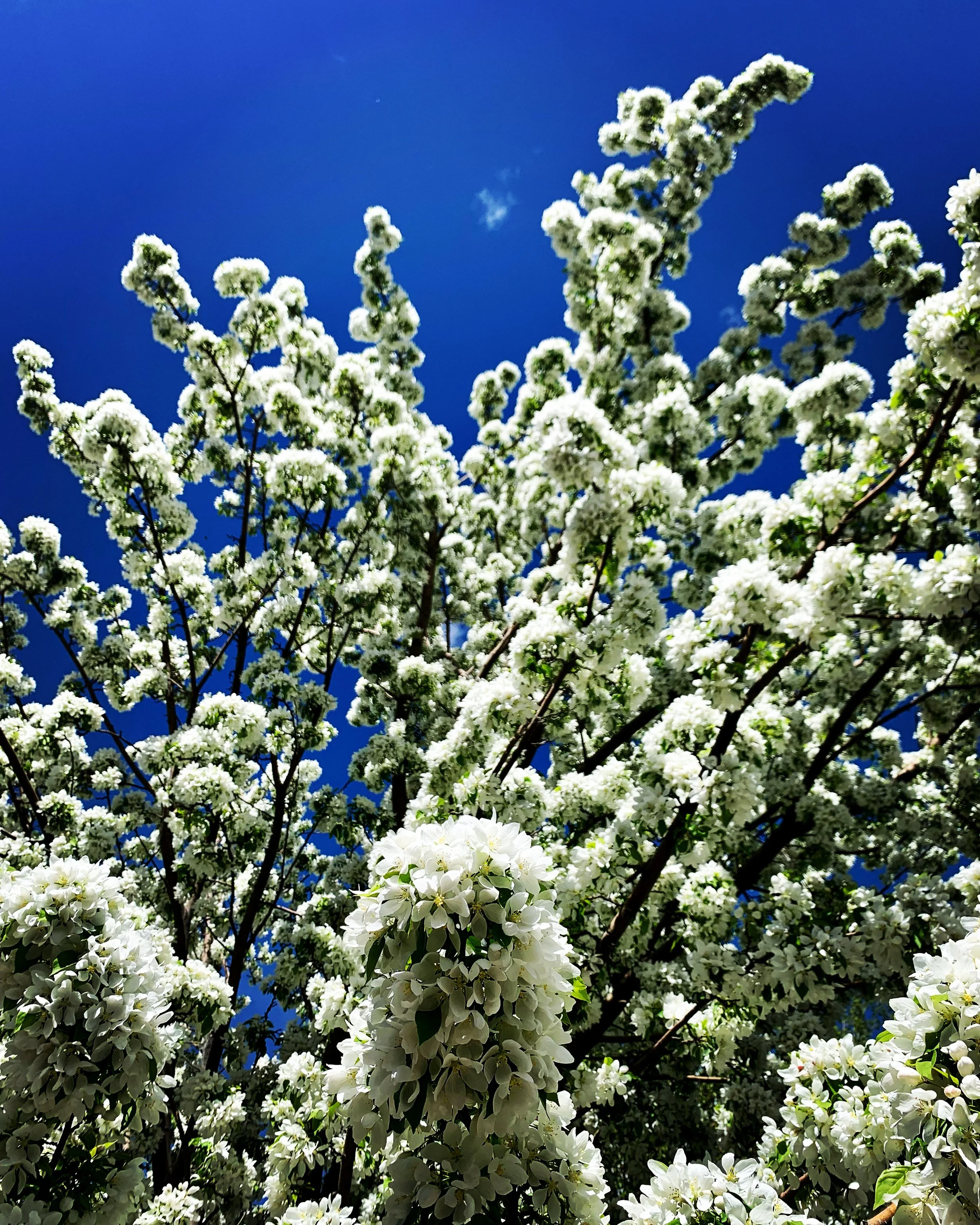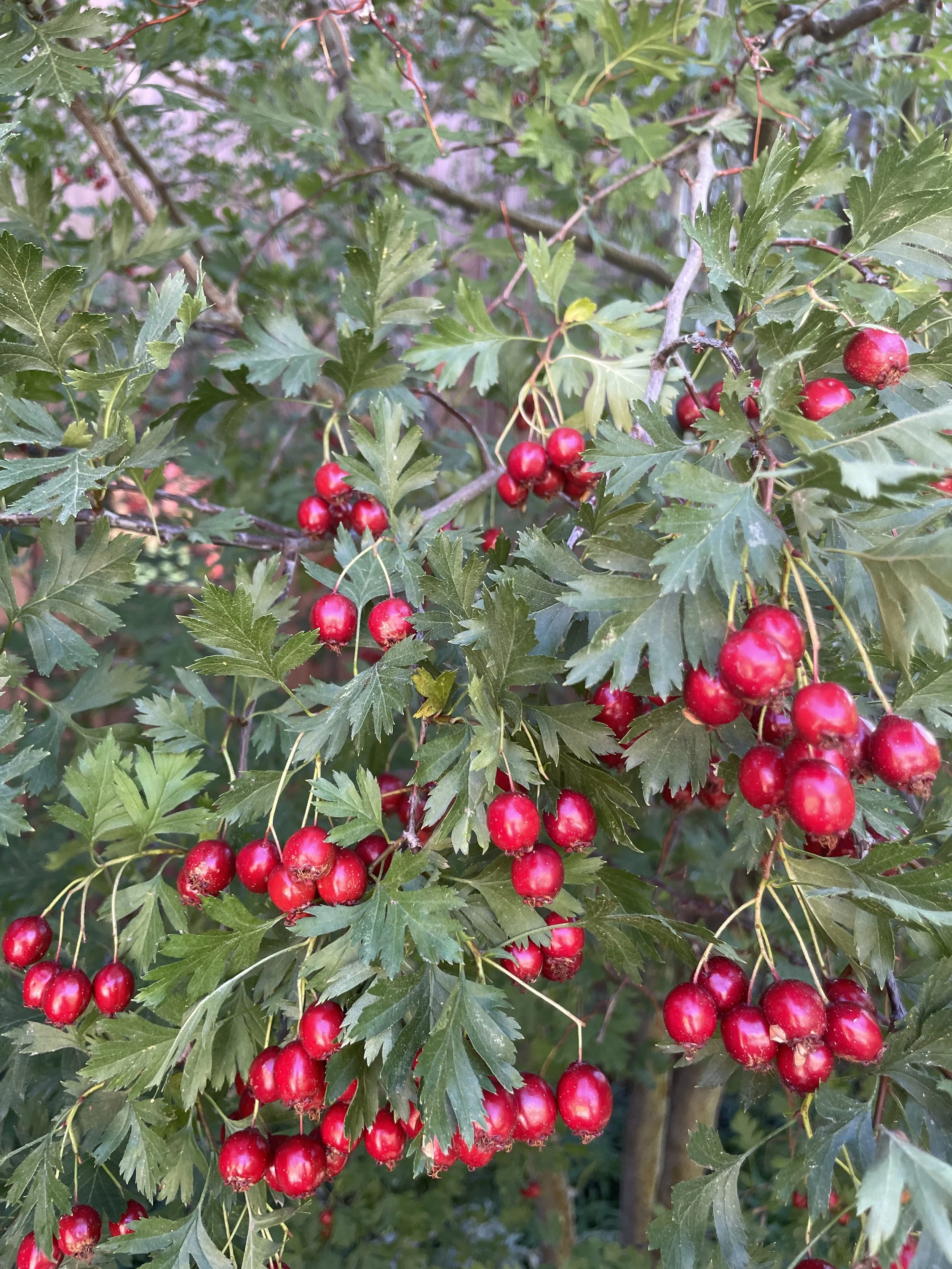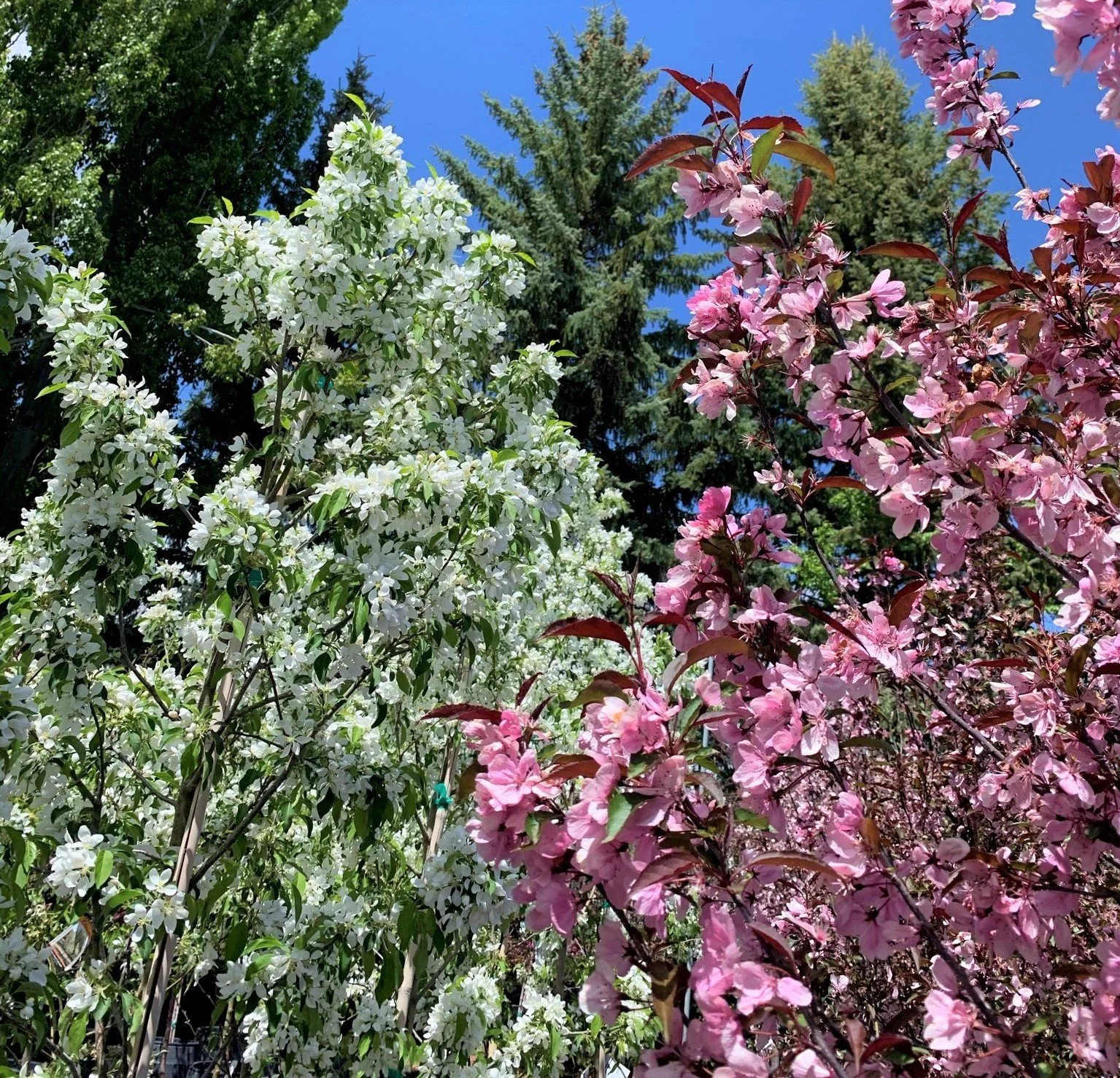Caring for Your Fruit Trees: Common Threats & How to Prevent Them
Fruit trees bring beauty (and delicious harvests!) to our landscapes, but they also face challenges from pests, disease, and wildlife. Here are some common threats in our Valley and how to prevent them.
FIRE BLIGHT
Fire blight is a common bacterial disease that affects trees like crabapple, apple, and pear. It spreads through bees, insects, water splashes, and unclean pruning tools. Once the bacteria enter through the blooms or wounds, it moves down the branches and can eventually infect the main trunk, leading to branch decline and the death of the tree.
Though there is no cure for fire blight, new infections can be carefully pruned out to prevent further spread. Additionally, treatments are available to improve tree vigor and help slow the disease’s progression. One of the best preventive measures is planting fire blight-resistant tree varieties. A quick search or a visit to your local nursery can provide a list of resistant options.
INSECTS & PESTS
Insects, such as coddling moths in apples and fruit flies in cherry trees, are also common pests that can damage local fruit trees. These pests lay eggs in the developing fruit, and the larvae turn into worm-like creatures as the fruit matures. While the larvae are not harmful to eat, they can certainly spoil your harvest. Early spring treatments can help manage these pests, ensuring a more successful and bountiful harvest.
WILDLIFE DAMAGE
Animals can also cause significant harm to fruit trees. Browsing deer, elk, and moose is frequent in our area, and in winter, voles and rabbits may feed on the bark and cambium of trunks and branches. This can lead to broken or dead branches or even tree mortality due to damage to vascular tissue. Protective measures, such as installing tree guards, fencing off trees, or using repellent sprays, can help deter animals from damaging your trees.
A SECRET TO HEALTH & LONGEVITY? PRUNING!
Pruning plays a key role in maintaining healthy fruit trees. The tree’s age is crucial when considering pruning as it affects both the potential for fruit production and the best time to prune. Young trees, still getting established, need minimal pruning beyond structural cuts. The focus should be on addressing poor branch attachments, developing a strong central leader, and evenly spaced scaffold branches. For mature fruit trees, pruning should focus on removing dead or broken branches, thinning inner branches to allow sunlight to reach the tree’s center, and eliminating vertical water sprouts.
Annual maintenance pruning is done during dormant months, after leaf drop but before bud break. This timing helps prevent the spread of diseases like fire blight, limits disruption to fruit and flower development, and supports overall tree health.
Concerned about your fruit trees?
Schedule an inspection today to assess their health and ensure they thrive for seasons to come! We can determine whether your trees would benefit from dormant pruning, treatments, or protective measures to improve their health and productivity.




